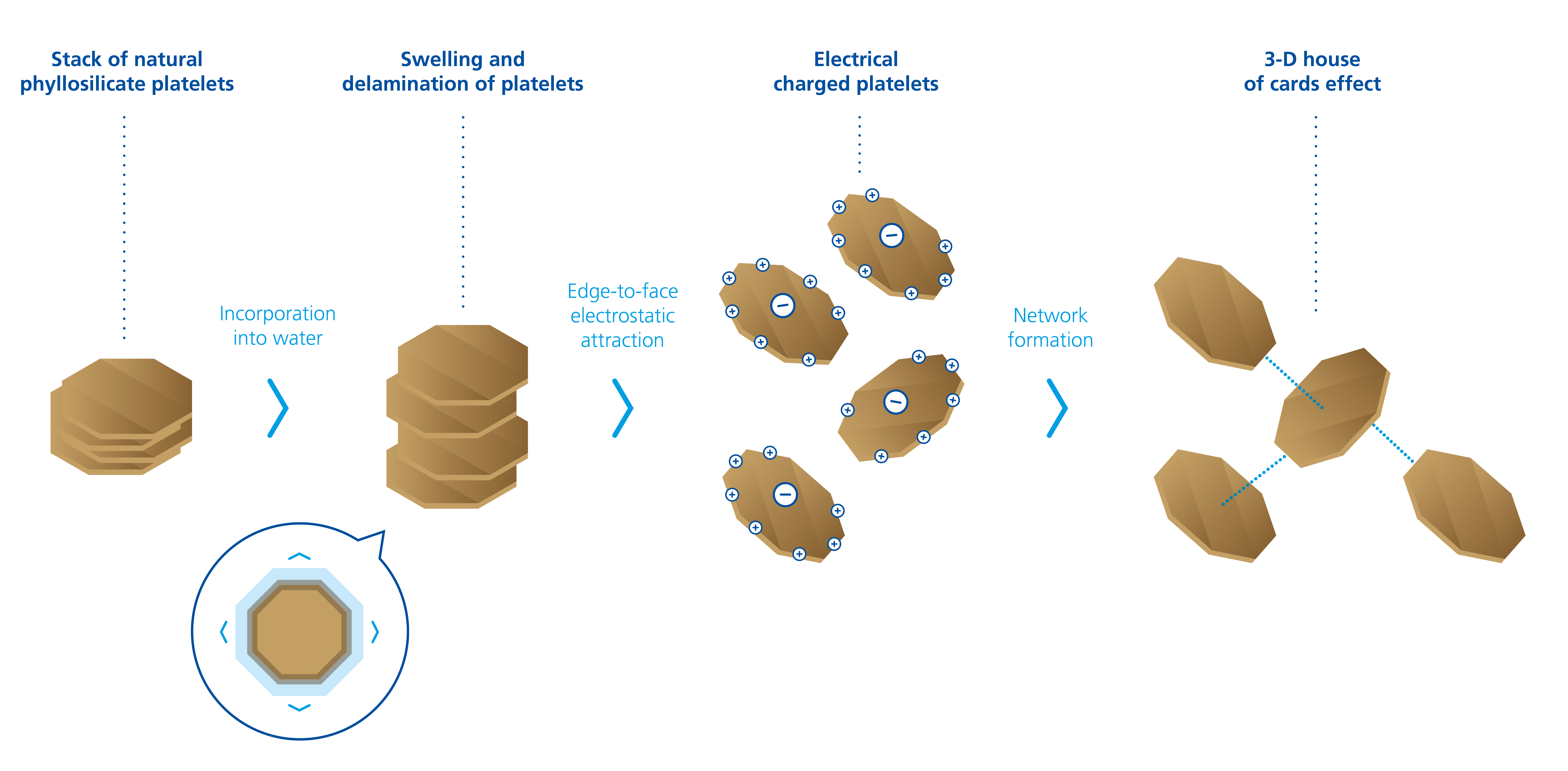
Natural mineral phyllosilicates (e.g. bentonites) belong to the group of inorganic rheology additives. They are obtained from natural deposits of volcanic origin and processed into powdered rheology additives after various treatment processes. The additives are used in very large quantities in a wide variety of aqueous applications.
For the production of rheologically effective phyllosilicates, special raw clays from selected mines are required, which must meet high quality standards. These selected clays are processed through Ca/Na ion exchange to optimize the swelling capacity. Additional cleaning steps and special drying and grinding processes during the manufacturing process have a significant influence on the quality of the products as well as effectiveness, handling, and price.
Due to their pronounced effectiveness in the low shear rate range, phyllosilicates are particularly suitable for improving storage stability. In contrast, they are less suitable for adjusting the in-can viscosity, since even low shear forces, as they occur even with moderate stirring, lead to significant shear thinning and lower viscosity. The strength of the structure always depends on the dosage (number of platelets) and the filler loading of the formulation. The thixotropic flow behavior produced by the phyllosilicate is particularly suitable, for example, for the formulation of pigment concentrates to prevent settling. In formulations in which natural phyllosilicates are used alone, there may be limitations, such as the tendency to spatter during roller application and lower effectiveness in the low pH range. These limitations can be significantly improved by organically modified phyllosilicates, and products optimized for different applications are therefore used.
The powder consists of agglomerated stacks of phyllosilicate platelets. Due to its hydrophilic character, it can be easily incorporated into water through stirring. The water penetrates through the capillarity between the individual platelets and swelling occurs with a large increase in volume. At the same time, the platelets are separated from each other by shear forces. The delaminated phyllosilicate platelets exhibit charge differences between the edges and the surface of the platelets. Due to these charge differences, the individual particles in aqueous formulations arrange themselves via electrostatic attractions between the edges and surfaces of the platelets in a three-dimensional structure, the so-called house-of-cards structure. Since the structure via electrostatic attractions in aqueous formulations is significantly weaker than a structure built up via hydrogen bonding, it can be easily destroyed again by low shear forces.
